What do you know about paralysis?
What causes paralysis? There is plenty of information on the internet that paralysis is causes by falls, motor vehicle accidents, and gun shots. But this is not an explanation of what is going on with the human body physiologically to cause the spinal cord to be unable to transfer electrical impulses down its length from the brain to the muscles.
Here is what the public thinks. Oh, the spinal cord has been severed. If it has been severed all the way through it is a complete injury. If it is only halfway cut it is an incomplete injury. If that is your understanding of spinal cord injury then you have no idea. The definition of spinal cord injury as complete or incomplete has NOTHING to do with the amount of damage that may have been done to the spinal cord. A complete injury means that BOTH motor and sensory function below the level of injury are gone. An incomplete injury means EITHER sensory or motor function below the level of injury is gone.
It is amazing the number of people with spinal cord injuries who never had this simple fact explained to them by their doctors or therapists. There are doctors and therapists who also think that a spinal cord injury definition is based on how severed the cord is. And yet these people will be in charge of dictating the life outcome for the patients. Because of this lack of understanding I see many spinal cord patients who at one point had great potential to improve but then poor management by rehab and healthcare takes it away. (See later regarding contractures)
Did you know you can become a complete paraplegic or quadriplegic from the presence of an air bubble in your spine from getting the bends while diving? An air bubble will not severe the spine, so how does that cause complete paralysis? Google paralysis and scuba diving if you do not believe me. You would think billions of dollars in ‘cure paralysis’ research would have given us the answer by now. There are people who are paralyzed from small amounts of bleeding into their spinal cord, there are people who are NOT paralyzed from major disc herniation. There are people who are paralyzed from crushing their vertebrae and there are people who are NOT paralyzed from crushing their vertebrae. There are people who have spine surgery who are fine afterwards and there are people who have spine surgery who end up paralyzed as a result of the surgery. (Every surgeon will state, they have no idea what happened btw) But I do not think the surgeons are dissecting the entire spinal cord during the surgery. So how can people end up paralyzed after careful surgery?
Patrick Rummerfield is a functioning quadriplegic. He runs marathons and hold world land speed records for driving cars. Yet 85% of his spinal cord was destroyed in a car accident when he was 21. Google it. So someone can destroy 85% of their spine and run marathons while scuba divers can get an air bubble in their spine and spend the rest of their life in a wheelchair?
To be honest, I do not think modern science has any idea what is going on with paralysis. But if we do not understand what causes paralysis then how the bloody hell do you expect anyone to find a cure?
So, what is the current state of spinal cord rehab for patients after injury and their prognosis for recovery?
The predominant theory of recovery from spinal cord injury is neuroplasticity. According to the NIH website, neuroplasticity also known as neural plasticity or brain plasticity, is a process that involves adaptive structural and functional changes to the brain. Essentially that the brain will rewire its inner connections to find new pathways to connect to the muscles below the spinal cord injury.
But why is this theory even applied to spinal cord injury recovery? Does anyone question it?
Each spinal cord nerve cell is a structural 1 lane freeway that connects the brain to a specific group of muscle fibers in a certain muscle. There are 69 million in the spinal cord. There is only one on-ramp and only one destination for each spinal nerve cell. The destination of the freeways cannot be changed. The nerve cells that supply the muscle fibers of the quadriceps muscle in the leg will only every attach to the quadriceps muscle. Certainly, a new way to get onto the one on-ramp for access to that neural freeway can occur via neuroplasticity in the brain, the same way it applies to stroke recovery. But gaining an alternative access to get on the freeway in the brain that transports electrical impulse to the quadriceps does not change the fact that the middle of that freeway is destroyed by the spinal cord injury. So how under the theory of neuroplasticity can any improvement in function be expected?
Yet, thousands of spinal cord patients spend months and even years suspended in a harness above a treadmill having other people move their limbs to attempt to achieve neuroplasticity. The science believes that if they move the patient’s legs passively enough times that somehow a new connection will be made between the brain, which is inactively processing the entire activity, and the legs, which are being moved flaccidly thousands of times.
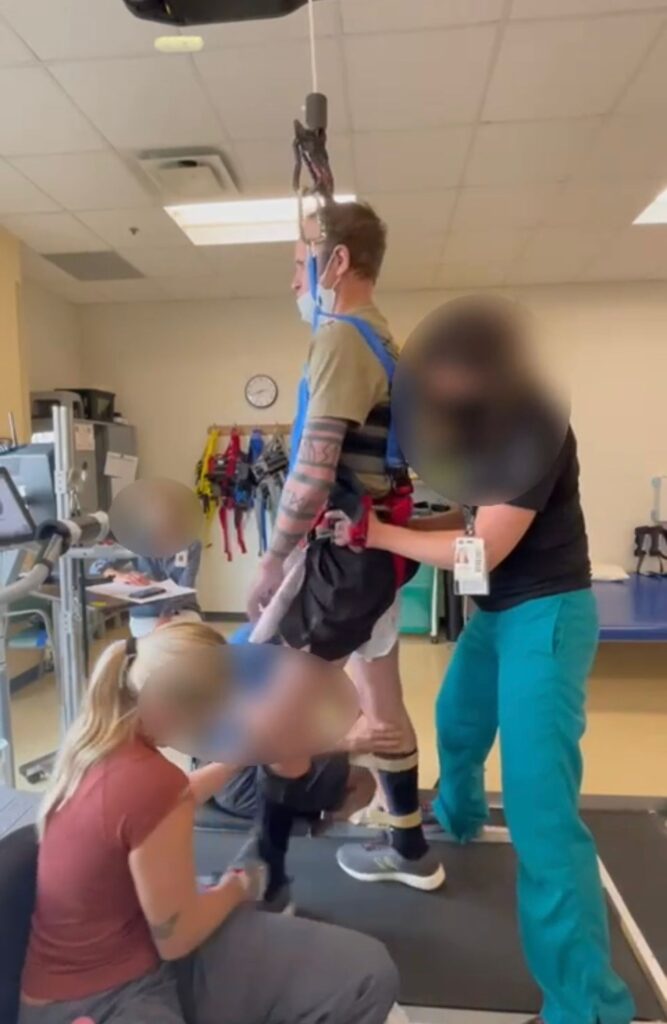
Are there any documented examples of people ever being able to walk again after this therapy? No. Why then is this the most predominant rehab given to spinal cord patients?
Now look at the same patient after 7 days of a YEATS SMD treatment intervention that is NOT based on neuroplasticity and is designed to make an immediate difference in neurological function.
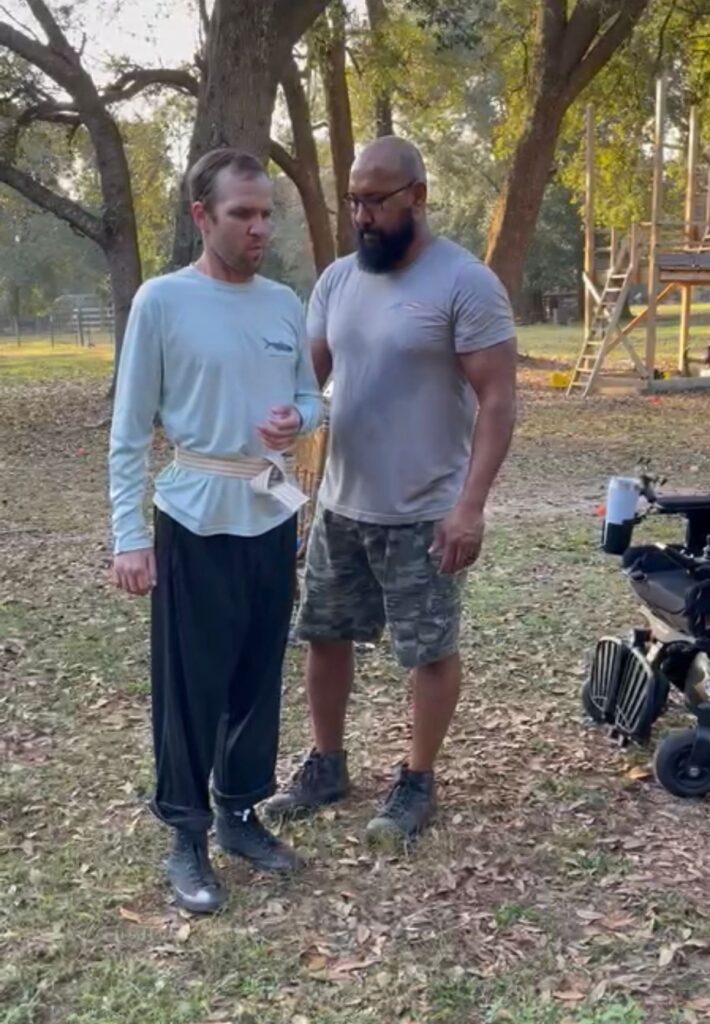
So why does anyone use a harness? Well, money. A harness creates an antigravity environment that rehab proposes will stimulate an increase in muscle strength in a weak patient, however whenever gravity is removed from a healthy individual this causes muscle atrophy. Every outer space trip and numerous studies on the detrimental effects of bed rest confirm this. So how is it that using a harness with a spinal cord patient will invert the laws of physics and physiology? How is it that thousands of well educated therapists, scientists and doctors do not understand this simple concept? This is a case of, well, this is how it has always been done, so this is the treatment that will be done, even without any science to back it up.
Does anyone question the effectiveness of this rehab? Does anyone question this theory of recovery that the entirety of spinal cord rehab is based on? Maybe you should.
Patrick Rummerfield regained nearly full function with 85% of his neural freeways destroyed.
According to the theory of neuroplasticity, the 15% of his spinal cord cells at level C4 that were not destroyed in his accident, are now able to stimulate 100% of the neural cells below the injury so that all the muscle groups they connect to can now function as they normally would. In other words, 15 one lane neural freeways that went to one specific destination now can go to 100 destinations, all because the brain found new ways to get onto the 15 on-ramps.
This is anatomically and physiologically impossible. But this is what spinal cord science believes.
It took Pat 17 years of intensive rehabilitation to achieve his recovery. To make new connections for 85% of 69 million cells would certainly take a high number of repetitions. It requires making a new, 100% accurate neural pathway connection every ten seconds, 24 hours a day, 365 days a year.
Spinal cord patients can believe in neuroplasticity if they want and go and hang in a harness above a treadmill for years. Don’t think much will ever happen, but someone will take a lot of money from you.
Along with the use of harness systems, there are many devices and approaches used in current spinal cord rehab that are detrimental to the progress of the patients. The use of platform walkers fundamentally alters the body’s use of the postural muscles to extend upright and walk by using the flexor muscles of the hip and abdominals. This promotes unwanted tightness and debilitating spasm in muscles (especially the hip flexors) that will make progression to gait impossible in the future. Yet these devices are the bread and butter of ineffective spinal cord rehab worldwide, while no one dares to look at the patients and observing how these interventions are actually making the body respond.
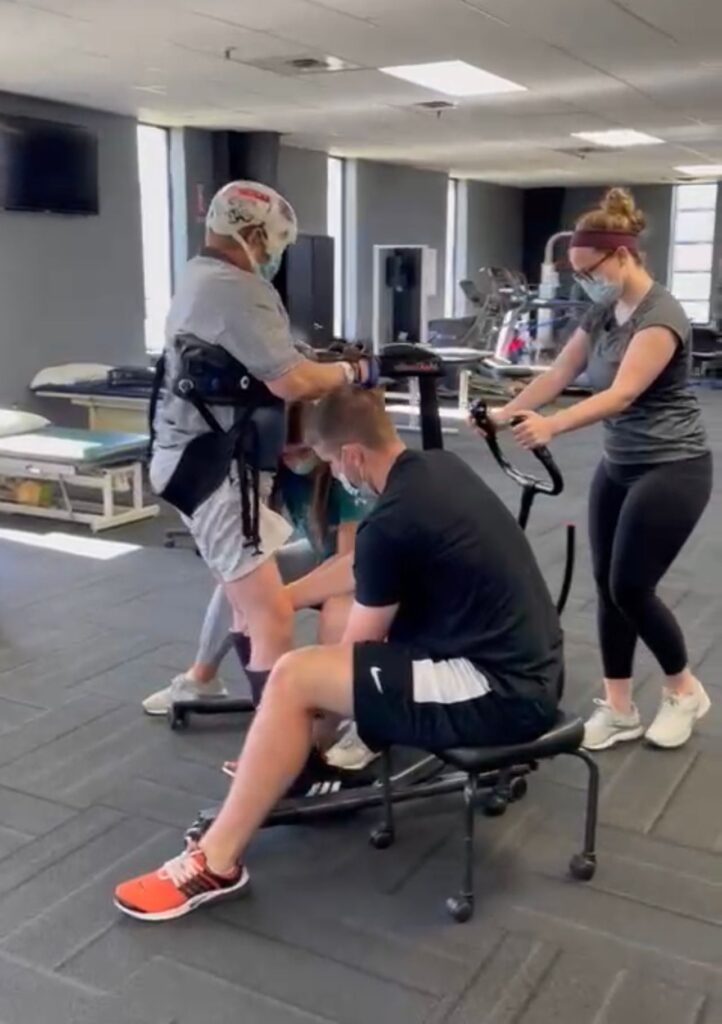
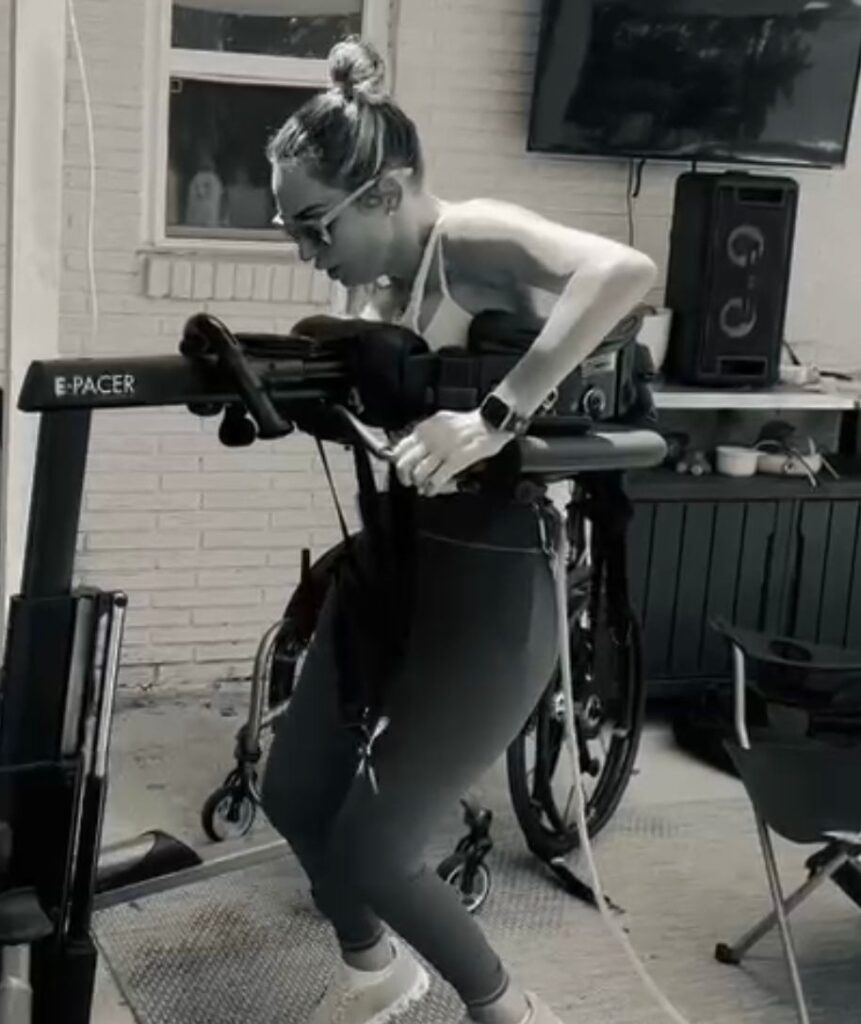
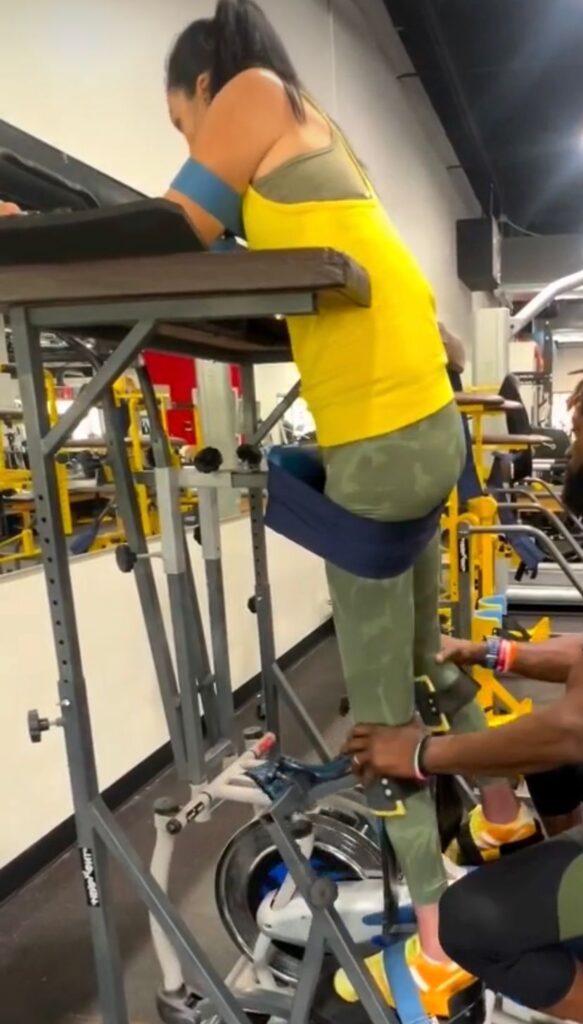
Do these pictures actually tell the story of a patient getting a functional benefit from the use of the devices, or is it more of creating a ‘wow’ factor of, look a paralyzed person is standing up. (Being held up) And people spend untold thousands of dollars to buy or go to a clinic to use these devices.
Focus on using devices that are functionally useless usually means that focus is taken away from basic prevention of contracture development in a paralyzed body. How is it possible that patients can leave the most highly rated rehab hospitals in the USA with upper extremity contractures because NO ONE bothered to even raise the patient’s arm above their head once a day during their stay? No one has bothered to spend 2 minutes explaining the importance of contracture prevention to the family. If you did not know already, once a contracture has developed there is NO getting the range back again. Prevention is the only way. (Anyone who says otherwise is solely interested in taking your money)

